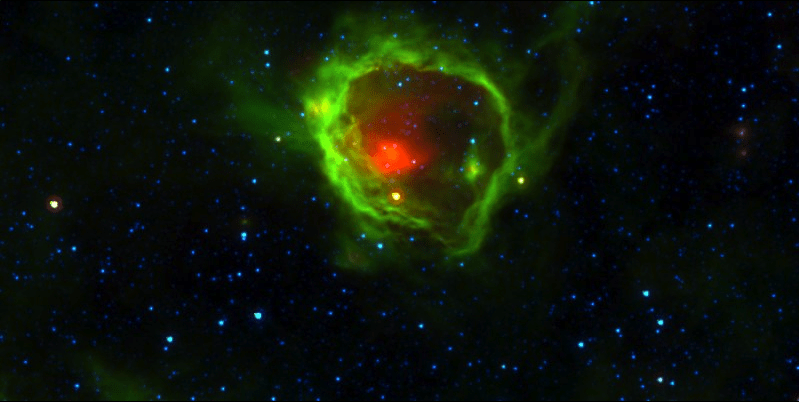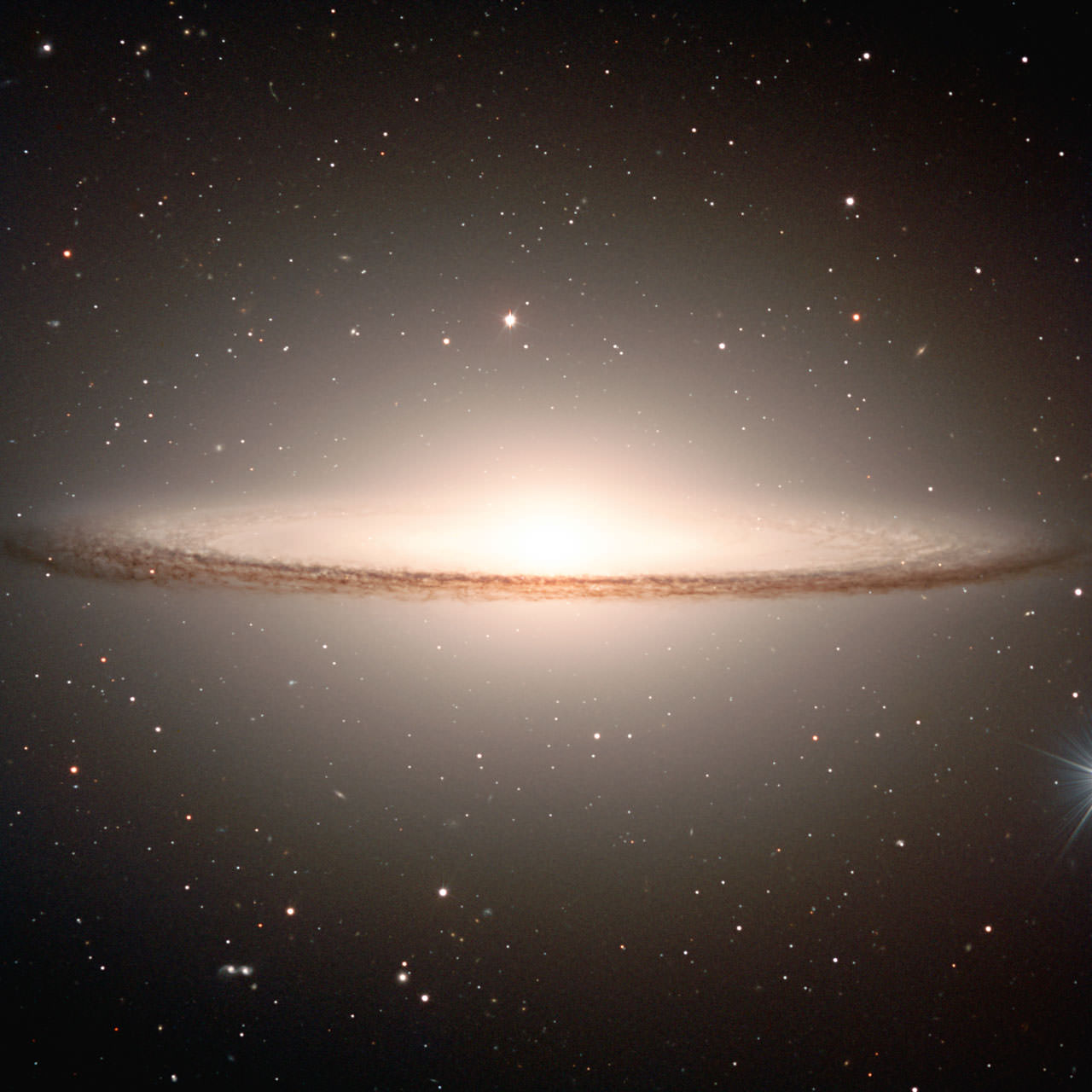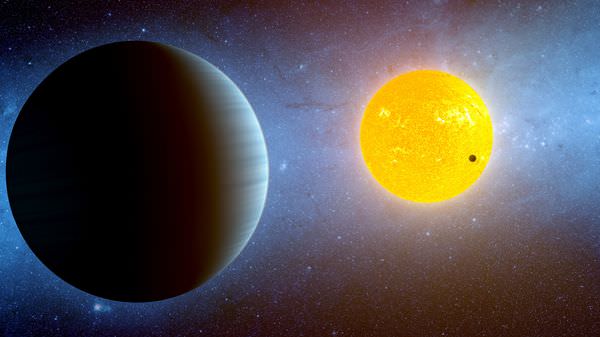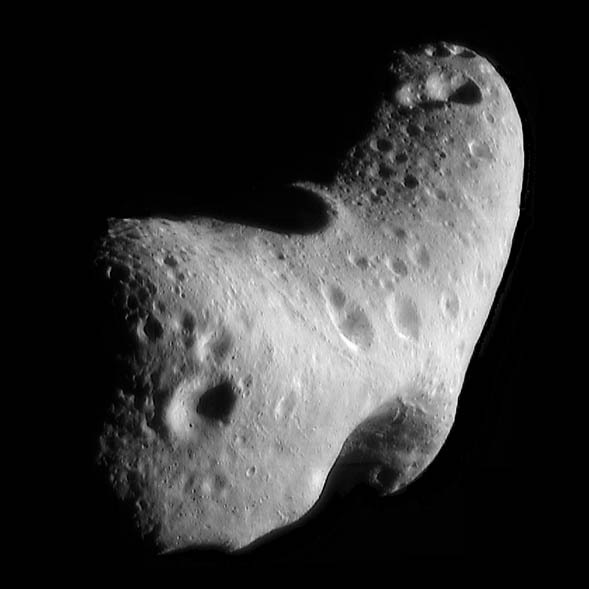On Thursday, Feb. 9, 2012, Keck Observatory will be hosting a live webcast of an astronomy talk by Dr. Tom Soifer of Caltech, who is the Director of the Spitzer Science Center. The title of the talk is “Seeing the Invisible Universe,” and Soifer will discuss the latest exciting results from NASA’s Spitzer Space Telescope. The webcast begins at 7 pm Hawaiian Time, 9 pm Pacific Time (5 am GMT, Feb 10) and will be streamed from the Kahilu Theatre in Waimea-Kamuela, on the Big Island of Hawaii. Watch in the window above (click the play button) or watch on the Keck website.
New Research Suggests Fomalhaut b May Not Be a Planet After All
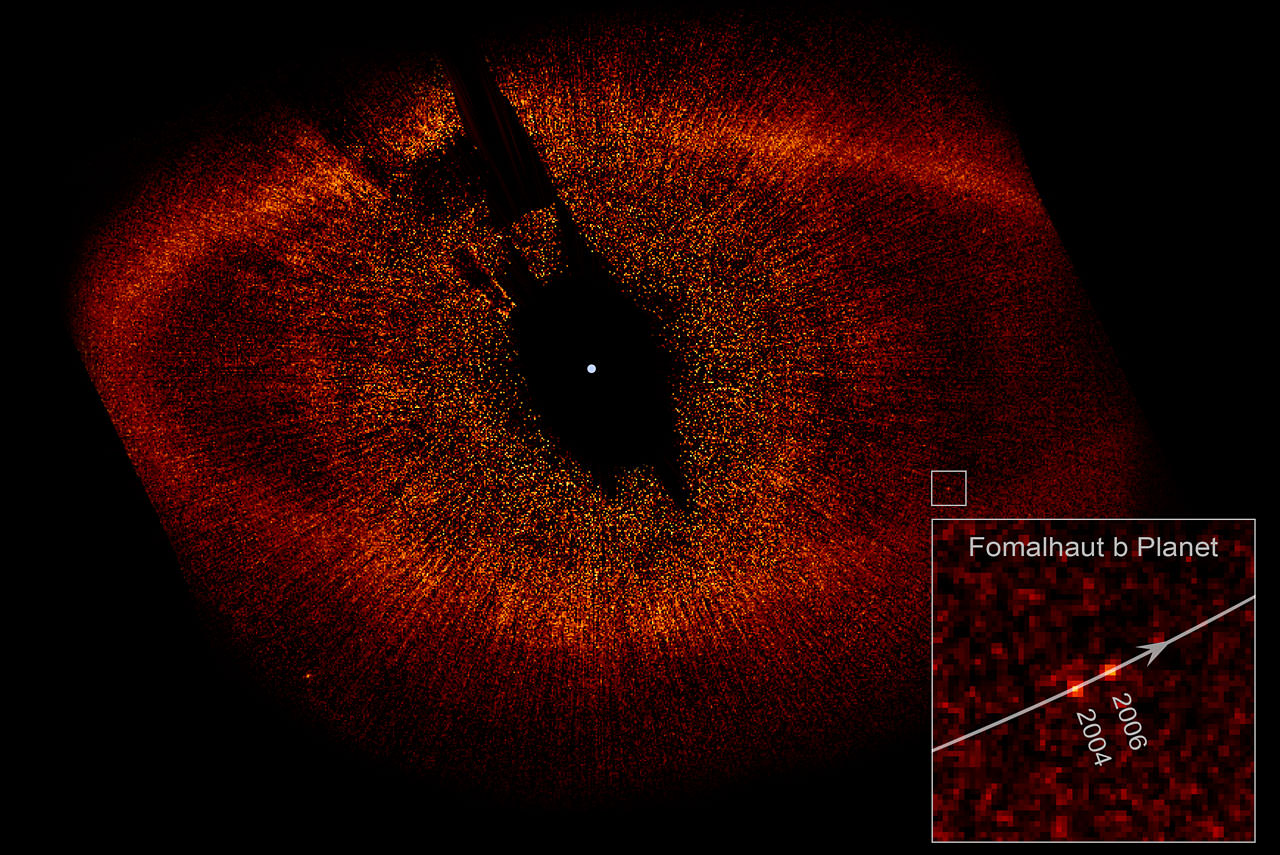
[/caption]
When the Hubble Space Telescope photographed the apparent exoplanet Fomalhaut b in 2008, it was regarded as the first visible light image obtained of a planet orbiting another star. The breakthrough was announced by a research team led by Paul Kalas of the University of California, Berkeley. The planet was estimated to be approximately the size of Saturn, but no more than three times Jupiter’s mass, or perhaps smaller than Saturn according to some other studies, and might even have rings. It resides within a debris ring which encircles the star Fomalhaut, about 25 light-years away.
Another team at Princeton, however, has just announced that they believe the original findings are in error, and that the planet is actually a dust cloud, based on new observations by the Spitzer Space Telescope. Their paper has just been accepted by the Astrophysical Journal.
According to the abstract:
The nearby A4-type star Fomalhaut hosts a debris belt in the form of an eccentric ring, which is thought to be caused by dynamical influence from a giant planet companion. In 2008, a detection of a point-source inside the inner edge of the ring was reported and was interpreted as a direct image of the planet, named Fomalhaut b. The detection was made at ~600–800 nm, but no corresponding signatures were found in the near-infrared range, where the bulk emission of such a planet should be expected. Here we present deep observations of Fomalhaut with Spitzer/IRAC at 4.5 µm, using a novel PSF subtraction technique based on ADI and LOCI, in order to substantially improve the Spitzer contrast at small separations. The results provide more than an order of magnitude improvement in the upper flux limit of Fomalhaut b and exclude the possibility that any flux from a giant planet surface contributes to the observed flux at visible wavelengths. This renders any direct connection between the observed light source and the dynamically inferred giant planet highly unlikely. We discuss several possible interpretations of the total body of observations of the Fomalhaut system, and find that the interpretation that best matches the available data for the observed source is scattered light from transient or semi-transient dust cloud.
Kalas has responded to the new study, saying that they considered the dust cloud possibility but ruled it out for various reasons. For one thing, Spitzer lacks the light sensitivity to detect a Saturn-sized planet, and bright rings could also explain the optical characteristics observed. He says, “We welcome the new Spitzer data, but we don’t really agree with this interpretation.”
The Princeton team, interestingly, thinks that there may be a real planet orbiting Fomalhaut, but still hiding from detection. From the paper:
In particular, we find that there is almost certainly no direct flux from a planet contributing to the visible-light signature. This, in combination with the existing body of data for the Fomalhaut system, strongly implies that the dynamically inferred giant planet companion and the visible-light point source are physically unrelated. This in turn implies that the ‘real’ Fomalhaut b still hides in the system. Although we do find a tentative point source in our images that could in principle correspond to this object, its significance is too low to distinguish whether it is real or not at this point.
A resolution to the debate may come from the James Webb Space Telescope, scheduled to launch in 2018.
Of course it will be disappointing if Fomalhaut b does turn out to not be a planet after all, but let’s not forget that thousands of other ones are being discovered and confirmed. There may occasionally be hits-and-misses, but so far the planetary hunt overall has been nothing short of a home run…
The paper is available here.
Citizen Scientist Project Finds Thousands of ‘Star Bubbles’
[/caption]
Remember when you were a kid and blowing bubbles was such great fun? Well, stars kind of do that too. The “bubbles” are partial or complete rings of dust and gas that occur around young stars in active star-forming regions, known as stellar nurseries. So far, over 5,000 bubbles have been found, but there are many more out there awaiting discovery. Now there is a project that you can take part in yourself, to help find more of these intriguing objects.
The Milky Way Project, part of Zooniverse, has been cataloguing these cosmic bubbles thanks to assistance from the public, or “citizen scientists” – anyone can help by examining images from the Spitzer Space Telescope, specifically the Galactic Legacy Infrared Mid-Plane Survey Extraordinaire (GLIMPSE) and the Multiband Imaging Photometer for Spitzer Galactic Plane Survey (MIPSGAL).
They have been seen before, but now the task is to find as many as possible in the newer, high-resolution images from Spitzer. A previous catalogue of star bubbles in 2007 listed 269 of them. Four other researchers had found about 600 of them in 2006. Now they are being found by the thousands. As of now, the new catalogue lists 5,106 bubbles, after looking at almost half a million images so far. As it turns out, humans are more skilled at identifying them in the images than a computer algorithm would be. People are better at pattern recognition and then making a judgment based on the data as to what actually is a bubble and what isn’t.
The bubbles form around hot, young massive stars where it is thought that the intense light being emitted causes a shock wave, blowing out a space, or bubble, in the surrounding gas and dust.
Eli Bressert, of the European Southern Observatory and Milky Way Project team member, stated that our galaxy “is basically like champagne, there are so many bubbles.” He adds, “We thought we were going to be able to answer a lot of questions, but it’s going to be bringing us way more questions than answers right now. This is really starting something new in astronomy that we haven’t been able to do.”
There are currently about 35,000 volunteers in the project; if you would like to take part, you can go to The Milky Way Project for more information.
Space Telescopes Provide New Look at 2,000 Year Old Supernova

[/caption]
What caused a huge explosion nearly 2,000 years ago, seen by early Chinese astronomers? Scientists have long known that a “guest star” that had mysteriously appeared in the sky and stayed for about 8 months in the year 185 was the first documented supernova. But now the combined efforts of four space observatories have provided insight into this stellar explosion and why it was so huge – and why its shattered remains — the object known as RCW 86 – is now spread out to great distances.
“This supernova remnant got really big, really fast,” said Brian Williams, an astronomer at North Carolina State University in Raleigh. “It’s two to three times bigger than we would expect for a supernova that was witnessed exploding nearly 2,000 years ago. Now, we’ve been able to finally pinpoint the cause.”
By studying new infrared observations from the Spitzer Space Telescope and data from the Wide-field Infrared Survey Explorer, and previous data from NASA’s Chandra X-ray Observatory and the European Space Agency’s XMM-Newton Observatory, astronomers were able to determine that the ancient supernova was a Type Ia supernova. And doing some “forensics” on the stellar remains, the astronomers could piece together that prior to exploding, winds from the white dwarf cleared out a huge “cavity,” a region of very low-density surrounding the system. The explosion into this cavity was able to expand much faster than it otherwise would have. The ejected material would have traveled into the cavity, unimpeded by gas and dust and spread out quickly.
This is the first time that astronomers have been able to deduce that this type of cavity was created, and scientists say the results may have significant implications for theories of white-dwarf binary systems and Type Ia supernovae.
At about 85 light-years in diameter, RCW occupies a region of the sky that is slightly larger than the full moon. It lies in the southern constellation of Circinus.
Source: JPL
Failed Star Is One Cool Companion
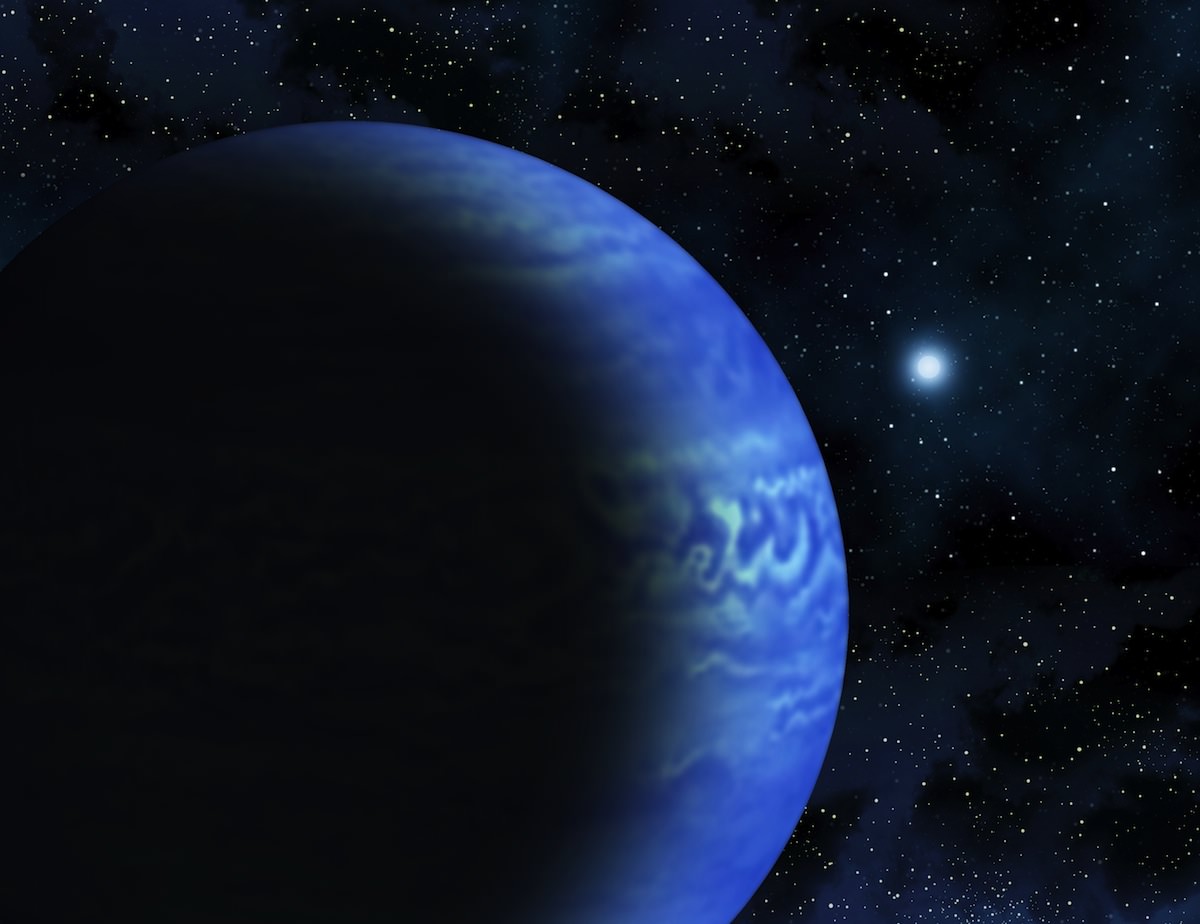
[/caption]
Astronomers have located a planet-like star that’s barely warmer than a balmy summer day on Earth… it’s literally the coldest object ever directly imaged outside of our solar system!
WD 0806-661 B is a brown “Y dwarf” star that’s a member of a binary pair. Its companion is a much hotter white dwarf, the remains of a Sun-like star that has shed its outer layers. The pair is located about 63 light-years away, which is pretty close to us as stars go. The stars were identified by a team led by Penn State Associate Professor of Astronomy and Astrophysics Kevin Luhman using images from NASA’s Spitzer Space Telescope. Two infrared images taken in 2004 and 2009 were overlaid on top of each other and show the stars moving in tandem, indicating a shared orbit.

Of course, locating the stars wasn’t quite as easy as that. To find this stellar duo Luhman and his team searched through over six hundred images of stars located near our solar system taken years apart, looking for any shifting position as a pair.
The use of infrared imaging allowed the team to locate a dim brown dwarf star like WD 0806-661 B, which emits little visible light but shines brightly in infrared. (Even though brown dwarfs are extremely cool for stars they are still much warmer than the surrounding space. And, for the record, brown dwarfs are not actually brown.) Measurements estimate the temperature of WD 0806-661 B to be in the range of about 80 to 130 degrees Fahrenheit (26 to 54 degrees C, or 300 – 345 K)… literally body temperature!
“Essentially, what we have found is a very small star with an atmospheric temperature about cool as the Earth’s.”
– Kevin Luhman, Associate Professor of Astronomy and Astrophysics, Penn State
Six to nine times the mass of Jupiter, WD 0806-661 B is more like a planet than a star. It never accumulated enough mass to ignite thermonuclear reactions and thus more resembles a gas giant like Jupiter or Saturn. But its origins are most likely star-like, as its distance from its white dwarf companion – about 2,500 astronomical units – indicates that it developed on its own rather than forming from the other star’s disc.
There is a small chance, though, that it did form as a planet and gradually migrated out to its current distance. More research will help determine whether this may have been the case.
Brown dwarfs, first discovered in 1995, are valuable research targets because they are the next best thing to studying cool atmospheres on planets outside our solar system. Scientists keep trying to locate new record-holders for the coldest brown dwarfs, and with the discovery of WD 0806-661 B Luhman’s team has done just that!
A paper covering the team’s findings will be published in The Astrophysical Journal. Other authors of the paper include Ivo Labbé, Andrew J. Monson and Eric Persson of the Observatories of the Carnegie Institution for Science, Pasadena, Calif.; Didier Saumon of the Los Alamos National Laboratory, New Mexico; Mark S. Marley of the NASA Ames Research Center, Moffett Field, Calif.; and John J. Bochanski also of The Pennsylvania State University.
Read more on the Penn State science site here.
Ancient Galaxies Fed On Gas, Not Collisions
[/caption]The traditional picture of galaxy growth is not pretty. In fact, it’s a kind of cosmic cannibalism: two galaxies are caught in ominous tango, eventually melding together in a fiery collision, thus spurring on an intense but short-lived bout of star formation. Now, new research suggests that most galaxies in the early Universe increased their stellar populations in a considerably less violent way, simply by burning through their own gas over long periods of time.
The research was conducted by a group of astronomers at NASA’s Spitzer Science Center in Pasadena, California. The team used the Spitzer Space Telescope to peer at 70 distant galaxies that flourished when the Universe was only 1-2 billion years old. The spectra of 70% of these galaxies showed an abundance of H alpha, an excited form of hydrogen gas that is prevalent in busy star-forming regions. Today, only one out of every thousand galaxies carries such an abundance of H alpha; in fact, the team estimates that star formation in the early Universe outpaced that of today by a factor of 100!
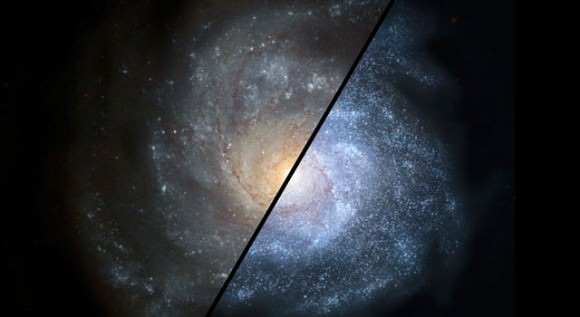
Not only did these early galaxies crank out stars much faster than their modern-day counterparts, but they created much larger stars as well. By grazing on their own stores of gas, galaxies from this epoch routinely formed stars up to 100 solar masses in size.
These impressive bouts of star formation occurred over the course of hundreds of millions of years. The extremely long time scales involved suggest that while they probably played a minor role, galaxy mergers were not the main precursor to star formation in the Universe’s younger years. “This type of galactic cannibalism was rare,” said Ranga-Ram Chary, a member of the team. “Instead, we are seeing evidence for a mechanism of galaxy growth in which a typical galaxy fed itself through a steady stream of gas, making stars at a much faster rate than previously thought.” Even on cosmic scales, it would seem that slow and steady really does win the race.
Source: JPL
Kepler Team Announces New Rocky Planet
[/caption]
Today at the American Astronomical Society conference in Boston, the Kepler team announced the confirmation of a new rocky planet in orbit around Kepler-10. Dubbed Kepler-10c, this planet is described as a “scorched, molten Earth.”
2.2 times the radius of Earth, Kepler-10c orbits its star every 45 days. Both it and its smaller, previously-discovered sibling 10b are located too close to their star for liquid water to exist.
Kepler-10c was validated using a new computer simulation technique called “Blender” as well as additional infrared data from NASA’s Spitzer Space Telescope. This method can be used to locate Earth-sized planets within Kepler’s field of view and could also potentially help find Earth-sized planets within other stars’ habitable zones.
This is the first time the team feels sure that it has exhaustively ruled out alternative explanations for dips in the brightness of a star… basically, they are 99.998% sure that Kepler-10c exists.
The Kepler-10 star system is located about 560 light-years away near the Cygnus and Lyra constellations.
Read the release on the Nature.com blog.
Image credit: NASA/Ames/JPL-Caltech
Spitzer Captures a Pink Sunflower in Space
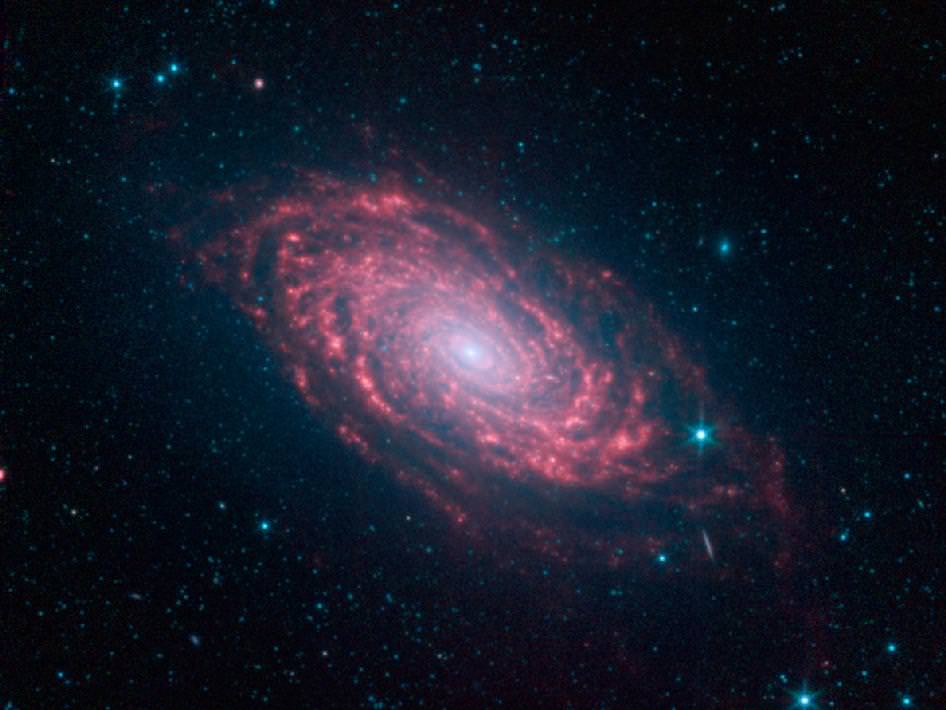
[/caption]
Looking out my own window this morning provides a gloomy overcast view, so this new image from the Spitzer Space Telescope provides a day-brightener: a pink sunflower! This is the Sunflower galaxy, also known as Messier 63, and with Spitzers’ infrared eyes, the arms of the galaxy show up vividly. Infrared light is sensitive to the dust lanes in spiral galaxies, which appear dark in visible-light images. Spitzer’s view reveals complex structures that trace the galaxy’s spiral arm pattern.
Source: JPL
This galaxy is about 37 million-light years away from Earth, and lies close to the well-known Whirlpool galaxy and the associated Messier 51 group of galaxies.
Astronomy Cast Ep. 207: Lyman Spitzer

Time for another action-packed double episode of Astronomy Cast. This week we focus on the Lyman Spitzer, a theoretical physicist and astronomer who worked on star formation and plasma physics. Of course, this will lead us into next week’s episode where we talk about the mission that bears his name: the Spitzer Space Telescope.
Click here to download the episode
Lyman Spitzer – Show notes and transcript
Or subscribe to: astronomycast.com/podcast.xml with your podcatching software.
Near Earth Asteroids Vary Widely in Composition, Origin
[/caption]
New research from NASA’s Spitzer Space Telescope reveals that asteroids somewhat near Earth, termed near-Earth objects, are a mixed bunch, with a surprisingly wide array of compositions. Like a piñata filled with everything from chocolates to fruity candies, these asteroids come in assorted colors and compositions. Some are dark and dull; others are shiny and bright. The Spitzer observations of 100 known near-Earth asteroids demonstrate that the objects’ diversity is greater than previously thought.
The findings are helping astronomers better understand near-Earth objects as a whole — a population whose physical properties are not well known.
“These rocks are teaching us about the places they come from,” said David Trilling of Northern Arizona University, Flagstaff, lead author of a new paper on the research appearing in the September issue of Astronomical Journal. “It’s like studying pebbles in a streambed to learn about the mountains they tumbled down.”
After nearly six years of operation, in May 2009, Spitzer used up the liquid coolant needed to chill its infrared detectors. It is now operating in a so-called “warm” mode (the actual temperature is still quite cold at 30 Kelvin, or minus 406 degrees Fahrenheit). Two of Spitzer’s infrared channels, the shortest-wavelength detectors on the observatory, are working perfectly.
One of the mission’s new “warm” programs is to survey about 700 near-Earth objects, cataloging their individual traits. By observing in infrared, Spitzer is helping to gather more accurate estimates of asteroids’ compositions and sizes than what is possible with visible light alone. Visible-light observations of an asteroid won’t differentiate between an asteroid that is big and dark, or small and light. Both rocks would reflect the same amount of visible sunlight. Infrared data provide a read on the object’s temperature, which then tells an astronomer more about the actual size and composition. A big, dark rock has a higher temperature than a small, light one because it absorbs more sunlight.
Trilling and his team have analyzed preliminary data on 100 near-Earth asteroids so far. They plan to observe 600 more over the next year. There are roughly 7,000 known near-Earth objects out of a population expected to number in the tens to hundreds of thousands.
“Very little is known about the physical characteristics of the near-Earth population,” said Trilling. “Our data will tell us more about the population, and how it changes from one object to the next. This information could be used to help plan possible future space missions to study a near-Earth object.”
The data show that some of the smaller objects have surprisingly high albedos (an albedo is a measurement of how much sunlight an object reflects). Since asteroid surfaces become darker with time due to exposure to solar radiation, the presence of lighter, brighter surfaces for some asteroids may indicate that they are relatively young. This is evidence for the continuing evolution of the near-Earth object population.
In addition, the fact that the asteroids observed so far have a greater degree of diversity than expected indicates that they might have different origins. Some might come from the main belt between Mars and Jupiter, and others could come from farther out in the solar system. This diversity also suggests that the materials that went into making the asteroids — the same materials that make up our planets — were probably mixed together like a big solar-system soup very early in its history.
The research complements that of NASA’s Wide-field Infrared Survey Explorer, or WISE, an all-sky infrared survey mission also up in space now. WISE has already observed more than 430 near-Earth objects — of these, more than 110 are newly discovered.
In the future, both Spitzer and WISE will tell us even more about the “flavors” of near-Earth objects. This could reveal new clues about how the cosmic objects might have dotted our young planet with water and organics — ingredients needed to kick-start life.


